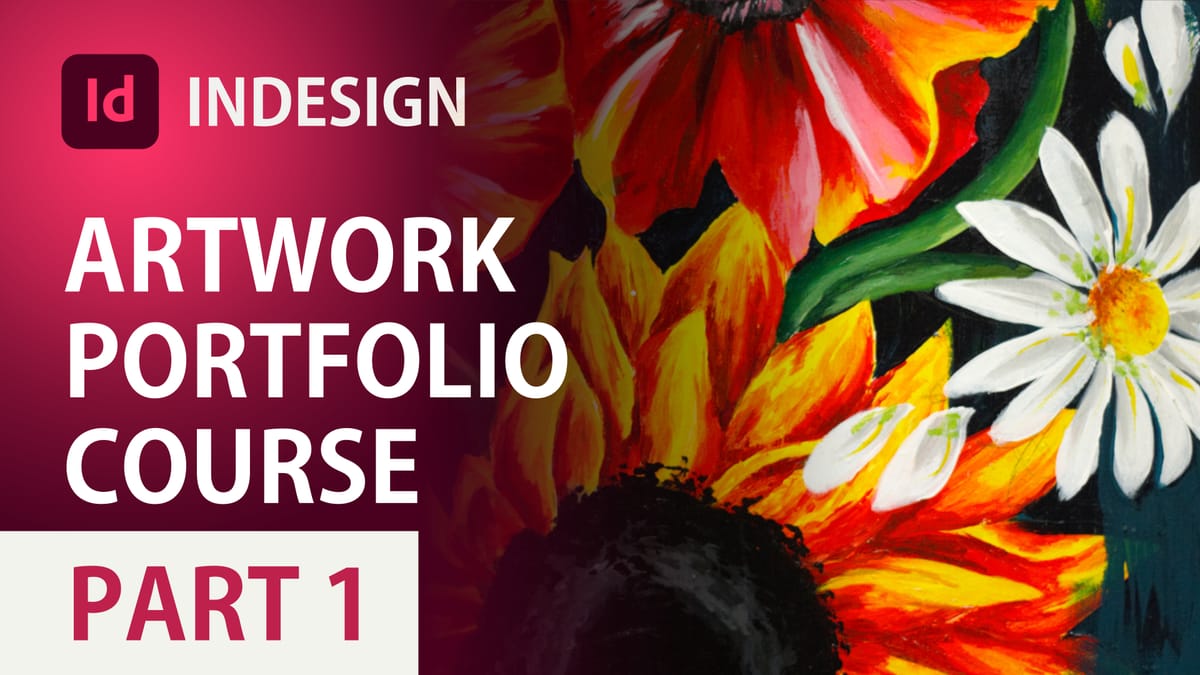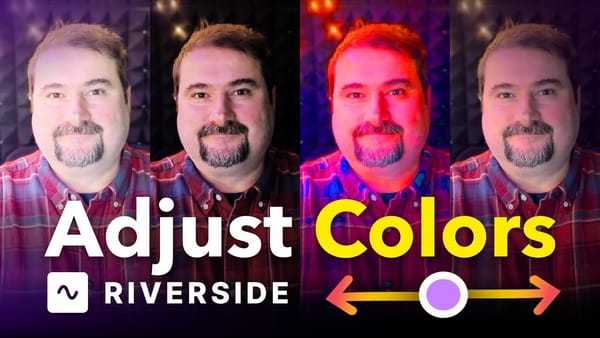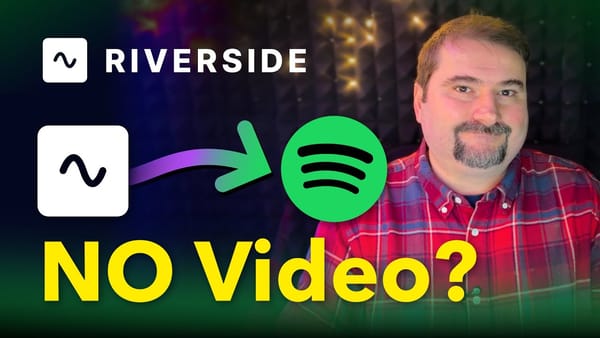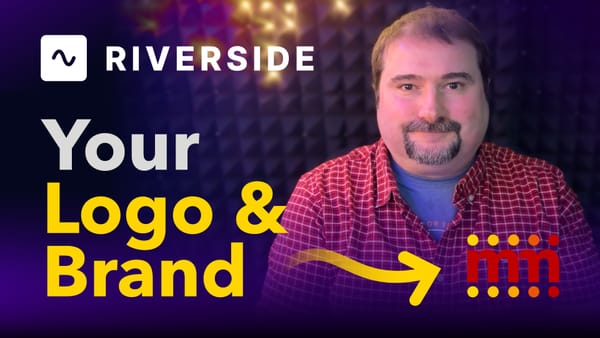Create Art Portfolio for University in Adobe InDesign (Part 1): INTRODUCTION to InDesign Course

In this series I show how you can create an Art Portfolio in Adobe InDesign. This mini-series is addressed to students or artists who need to create an artwork portfolio to present for their application at University or to show their work to teachers, potential course masters, and so on.
The course will have more parts, each episode dealing with one phase of the project. I will not go into too much detail and will not aim to cover all the tools available in InDesign. We will simply focus on the tools and processes to 'get the job done' and help you get your portfolio done in as short time as possible.
This is Part 1: Introduction and laying the groundwork
I would like to start a series of videos or maybe an entire course on InDesign with a special emphasis on creating an art portfolio. Recently I've had to create one portfolio like this because my daughter is hoping to study concept art at university. So during the application process, It was necessary to create a portfolio of her artwork - created until now in secondary school and A-level work.
And then we had to organize all these artworks into a portfolio to present to universities as part of the application process and due to this year's COVID situation, a lot of the application has happened online anyway, and the portfolio had to be sent in digitally. And also, if there was an interview that was usually, you know, online.
So we had to prepare the portfolio in a nice way so that it was easy to browse, but it also shows the best of her work.
So let me show you what we will achieve in this course or a tutorial series:
This is the portfolio, of course, a title page with one of the preferred or her favorite elements, which is a sunflower and her name of course, and 2020.
And then we had one page that shows a summary of all the works that are included in the portfolio. This portfolio is in A3 format, but when you send it in digitally, it doesn't really matter what size it is, really, unless you're going to print this or the university has specific requirements.
So we created an A3 format because we also wanted to keep the option of being able to print this if we wanted to. And we indeed printed it online somewhere, we had it sent to us and it looks gorgeous. So in this course, I'm going to walk through the basic functionality of Adobe InDesign.
If you don't have InDesign, you can download the fully-functional trial version. from Adobe. So we will be using the latest version at the time of writing, which is going to be InDesign 2020, part of Creative Cloud. You can get, I think, a cheaper version for students or you can subscribe for just one month and do your portfolio, f the trial version is not enough for you. And I know this time of year, all the students applying for art courses at universities, have to prepare the portfolio. So this tutorial is going to be not necessarily rushed, but it's going to be just using the functions in InDesign that we need to create this portfolio.
We're not going to go into very much detail and systematically take InDesign and teach all of the functions in it, exhaustively. We are just going to focus on the main things we need to use from InDesign to create this particular type of portfolio. And I'm pretty sure most of the portfolios out there are going to be similar to this.
You're going to have perhaps title category pages, perhaps with personal projects and then you are going to have each big art piece on a page, maybe with a little description next to it, maybe a picture to show the scale and just a simple design to present during your application process.
So if this is what you're trying to do now, and you don't know where to turn, this course is for you. Really, I'm not going to spend, like I said, a lot of time detailing all of the functions and just going to help you get the job done.
This is my daughter's portfolio.
You can see the type of work she's doing - sketches, paintings, etc. We even took pictures of her notebook and sketchbooks. So we used some of those because some of the artwork you need to present includes perhaps some of the sketches you're doing and study sheets and all that stuff.
She's actually gone and done a bit of comic books, so you have a few pages showing your sketches and then describing them - a bit of text, describing what you're looking at and then showing the finished product.
So we're going to use this as a way to learn how to make one from scratch.
I hope this course or series of tutorials is going to be useful to you. And if you have any questions, just leave them in the comments for every part. You can also find links to her online portfolio and also links to get Adobe InDesign. If you want to get a trial version of this. So you can use this tutorial and just follow along and build your portfolio.
In the end, we will export the portfolio. So we will cover, these are the topics we will cover in this course. First of all, we will look at InDesign, create a new document.
Prepare the document, prepare the files that are going to go in all the artwork. So it's very important to think about the stuff you're going to put in just before you even start organize your content. This is one of the main main things before you even go into InDesign. It's important that you have all of your artwork digitized.
So we will look at how to do that. And also we will look at laying out the page, importing the graphics, creating the graphic boxes, putting all that stuff on the page and, you know, changing text font, creating the layout, managing pages, all of these things. To end up with a finished product, your finished portfolio, and then exporting that portfolio digitally, making it so that you can send it to, to a university for a, you know, application, or if you want to print it, export it for print so you can print it online and then exporting it as a reduced file.
So that you can maybe even email it to someone or send it using one of the online transfer services. So the file isn't huge. And, you know, depending on how you scan or you photograph your content, the files could be quite huge. So we will be creating a finished. PDF file with your entire portfolio, ready to send to a university or application process or teachers or whatever.
How we started on the portfolio
So during this process, what we did was we first started with the artwork. So let me show you. What we did just to start. So you can see here, these are all of the folders with all of the artwork that we had. So one thing that I would like to emphasize is the better your content is going in. The better your images are the better your scans or photos are the better your portfolio is going to look.
So what we did was because a lot of Diana's works were quite big. I mean, A2, A1 pieces. They were impossible to scan using a conventional desktop computer scanner. So we had to take pictures of them. What we did was for the ones that we could, we of course scanned using a scanner, but then the ones that were too large for a scanner, we had to take pictures of.
So this is probably one of the tricky parts because we had to take many pictures of them. And of course you can take pictures using your phone. As you know, so you have to have a very good phone to take pictures, or you could ask a friend with a DSLR camera to take a picture like a Canon or Sony or whatever. Take pictures of your artwork in a well lit environment.
So I, I'm not going to be able to show you how we took the pictures. We basically took the pictures in our kitchen. We, we put the lights on, we bought two lights on a stand and. We pointed those at the artwork. And then we took pictures. So let me show you this is one of the pieces or this one. So you can see, we created folders here with all of the different shooting sessions.
So this this artwork, for example, you can see, we took pictures of the artwork going from the top to the bottom. And then finally we created a stitch using Photoshop. So I'm going to show you how to stitch together, like a puzzle pieces of the artwork that you take pictures of. So, because we couldn't put the scanner to use for this P this, these artworks, we had to take pictures of it.
So this is the full size at work. If I open this really quick, this is the the picture, the, the full size image, but then we. Started, we took a full, full size pictures of it. And then we took in from top to bottom, we took a few from top to bottom, like four shots from the top, the middle sort of lowest and the bottom.
And then we stitch those together. Then we took another series just to make sure. That my hand wasn't because I was holding my DSLR, my camera in my hand and just going, shoot, shoot, shoot. Going up from the top to the bottom. Sometimes your, your hand moves or your, you know, shaking and stuff like that.
Maybe shaky you, you get one of the shots. If one of the shots is shaky, then your picture is going to be blurry. Even if you stitch it together. One part of that picture is going to be blurry. So yeah. It's quite important to have like a one day of shooting. If you can't hire, obviously you're a student, you can't really spend money hiring a professional photographer, which we couldn't do.
So I had to take the pictures. We just took a one day and put, took all the artwork, all the photos, all the pictures together, all of the paintings. And we shot all of them in slices. And then we stitched them together in Photoshop, which was another day of work. So as you can see, there's a lot of work involved in just preparing your artwork.
Now, if you're happy, your artwork isn't that large. If your artwork is up to maybe a three format, you can find scanners that scan a three. And that is obviously better because you can scan your artwork, maybe 300 to 600 DPI. And of course, you're going to end up with very good quality because you don't have to worry about blurriness, stitching them together.
You don't have to worry about camera lighting and all of that because the scanner does all of that for you. But if you don't, if you, if your artwork is much larger than that, then you're going to have to photograph it. So the advice I have is find a very well lit room. Create a little mini studio. If you can get an easel and place the picture on the easel and then take photos of it and do not be, I mean, digital photos take as many as you need.
Take a one full side, take a few full sized pictures from afar, then come closer and take chunks of it. Make sure you don't miss one of the portions and then save those as well. And then you can stitch them in Photoshop. And I'm going to show you how that is done. And that you can see here, we have six versions of each photo, four versions, or, you know, so when we were happy with that, so like this one, for example, we took six different types of photos for it.
We took the full size one and then we took top to bottom and then we took another one top to bottom, and then we started doing half and half on the top and the middle, and then we took more and then. Finally, we took another one because I was not happy with it. So in the end I stitched all of these together and I ended up with one good version.
So if I'm showing you this, now you can see these are the different components, different slices. And then if I show you the final stage, this was the final stitch that we liked the best in terms of lighting and in terms of you know, sharpness. So if I zoom in on this one, In Photoshop here, you can see it's quite quite high resolution.
You can see the brush strokes here. So if I zoom into this is a hundred percent, so this is the real size of this photo of this art work. You can notice that here on the side, it is a little blurry. So even this one was not. A hundred percent perfect. If you don't have a professional studio and a professional photographer, then you're going to have to do a best effort thing.
So this is what we have ended up with. This is the version we used in the final work and it turns out it was quite good. I mean, this painting was, I believe. A one size and it ended up being printed on an 83 sheet of paper, pretty much half the sheet. It's almost a April or size. So this was the version we used, so it looked quite good.
And when we printed it and the print arrived, it was quite good. It looked very sharp. Very nice. Just want to emphasize before you start. It's quite important that you have your content digitized, your artwork digitized. And even if you're not going to use all of them, digitize all of them, because then it's very easy to use them online as well.
If you want to create an online portfolio and also incorporate them in your artwork portfolio, this is the first advice digitize your content. And then the second piece of advice is before we start plan out your content, these are all the artworks that we are using in this portfolio. She had much more than this, but of course we couldn't use all of them because then whoever's looking at your portfolio might be bored.
So you really want to be using the best works. The best artwork that represents your, your style, your particular style, and also the artwork is that are going to be part of your portfolio should reflect the sort of the course you're trying to apply for, to show. That is relevant to that course. So in this case, Diana wants to study character design and concept art movies or, or computer games and all of that.
So then she does have a lot of flowers of course, from her previous years. But then the actual work that she really wanted to emphasize was these comics, this character development, and this person that she designed, this character, she designed and uses it in a. In a comic, of course we featured and explained a lot of the story behind this character.
And of course you're showing the other work to just show the, sort of the range of. Well, if you can do, but of course you want to show the stuff that you want to study. I don't want to give you this advice so much because of course, I'm sure you have received plenty of advice from your teachers and from the application websites for the particular University.
So let's dive into in design how to create an art portfolio using InDesign. And I'm not saying InDesign is the only tool you can create this with. You can use other tools and some of them are even free. Personally. I like to use InDesign because it's, it's a professional tool that has all of the functionality that I need.
I also like to use Xara Designer Pro for graphics, and that one is also able to do layout and print quality graphics. So. Let's start. This has been a very long introduction. I'm sorry for that. I'm just trying to lay the groundwork for what's coming. If you enjoy these tutorials or you find them useful, share them with your friends, subscribe to my channel like it, and comment.
If you have any questions, let me know. And I'm very happy to create a specific video showing a specific problem or solution. If you find that I haven't covered anything here, I may have glossed over some stuff that, you know, I should have maybe covered more in depth. So thank you for watching again, see you on the next one.
For all the videos in this Adobe InDesign mini-course, see this YouTube playlist on my channel:
Artwork Portfolio Course





